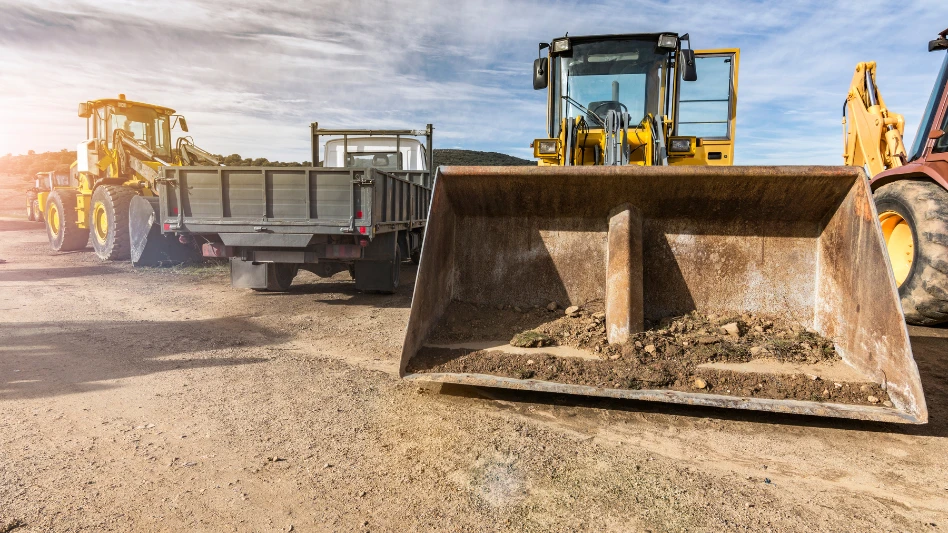Any maintenance operation needs crews that show up every day, and equipment that shows up, too. Nothing derails a solid day of work more than equipment that is finicky or unreliable. Lawn & Landscape caught up with two contractors to get their perspective on what to look for in a string trimmer.
All Day Labor
Steve Rak, vice president of Southwest Landscape Management in Columbia Station, Ohio, says he needs equipment that is going to work for his crews every time.
“Our biggest issue is, is it reliable? Is it going to work for us day in and day out?,” he says.
Rak uses RedMax string trimmers, mainly because they’re highly recommended by his outdoor power equipment dealer. “Basically, we usually buy equipment because of the dealer and the service they’re going to give us,” he says. “Usually they give us good advice.”
Southwest Landscape Management does nearly 100 percent commercial landscape maintenance – a lot of homeowners’ associations, subdivisions and cluster homes – and snow and ice removal in the winter months. This year’s revenue should exceed $1 million.
 Contractors look for durability and reliability in their string trimmers.In season, Rak has 18 employees and about 20 string trimmers running almost non-stop. With that many pieces of equipment out inthe field, he receives a fleet discount from his outdoor power equpment dealer. And, he recently decided to move from high-end models to mid-range ones; he now pays between $250 and $300 for each one, instead of $400. He made the move to save money, and it forced him to give up some horsepower, but his crew didn’t even notice the change.
Contractors look for durability and reliability in their string trimmers.In season, Rak has 18 employees and about 20 string trimmers running almost non-stop. With that many pieces of equipment out inthe field, he receives a fleet discount from his outdoor power equpment dealer. And, he recently decided to move from high-end models to mid-range ones; he now pays between $250 and $300 for each one, instead of $400. He made the move to save money, and it forced him to give up some horsepower, but his crew didn’t even notice the change.
“I personally didn’t notice that much of a difference,” he adds.
Rak’s advice to contractors ready to pull the trigger on a string trimmer purchase is to find a model that is easy to change the line on. “That takes some time,” he says. “That is the most time consuming thing with those machines is changing the trimmer line. Is it easy for guys to get the heads off?”
With so many string trimmers running, Rak says he often replaces the old ones instead of repairing them. “When you have 20 guys out there, (the equipment) gets somewhat abused,” he says. “When you need them, you need them. You need to service the client.”
And this year, his business is up about 10 percent, which has allowed him to purchase a few more new mowers and string trimmers for his operation.
“I’m sure that’s not the case for everybody, but for us we had to go buy some new stuff. It was time to get a couple of new pieces of equipment,” he says about his purchasing plans. “You have to know what to look for and know when they’ve lived their life.”
Bottom Line
Jay Gilbert, president of All Things Green Landscaping, Vero Beach, Fla., echoes Rak’s feelings on reliability in outdoor power equipment.
“I just care that they work and they’re comfortable in my hand. That’s the bottom line and that’s what helps the bottom line – that they work,” Gilbert says of his string trimmers.
Gilbert uses Echo trimmers in his one-man operation. He likes their durability and reliability. All Things Green, founded in 2004, does landscape and lawn maintenance, and irrigation work with a 40 percent commercial and 60 percent residential split.
These days, Gilbert says he’s hanging onto equipment longer than he would in boom times.
“I’m holding on to them as long as I can, until the motors go,” Gilbert says. “Once the motors go, I just use them for parts.”

His trimmer fleet is nine strong – a remnant from when he had nine employees, before he shrunk the business to make it more manageable – and comprises four different models. He says he plans on moving toward just one model, to make repairs easier.
The U.S. economy has been tough on Gilbert’s company; he plans on holding steady next year on sales and power equipment purchases.
“It’s tough like anything. A lot tougher,” he says. “I’m buying less equipment, spending less money. Instead of expanding, I’m just staying where I’m at.”
The author is managing editor of Lawn & Landscape magazine. Send him an e-mail at cbowen@gie.net.

Explore the January 2010 Issue
Check out more from this issue and find your next story to read.
Latest from Lawn & Landscape
- Analysis of an entrepreneur
- Terra Nova's Sedum Conga Line variety wins Best of 2024 Perennial award
- Different ways to distribute
- Case's 580EV electric backhoe loader wins Good Design Award
- Davey Tree promotes Dan Herms to VP, GM of Davey Institute
- Caterpillar's Cheryl H. Johnson set for April retirement
- Registration open for sixth annual Lawn & Landscape Technology Conference
- 12 interview questions to help you hire winners





